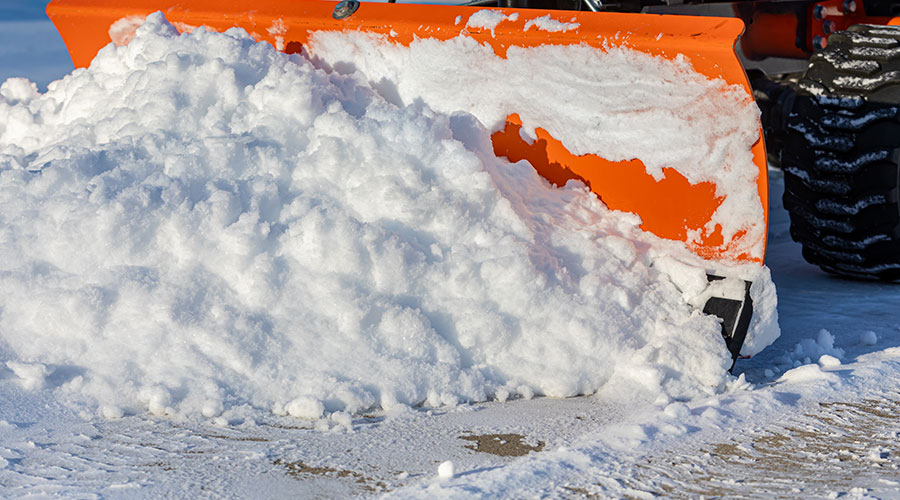Snow & Ice Removal: Managing Anti-Icing and Deicing Materials
The use of materials — anti-icing and deicing chemicals, specifically — is the final major area for managers to consider in the off-season when reviewing snow and ice operations. By taking a closer look at material-usage policies and procedures before winter hits, managers might realize they can reduce costs and lessen their operations' environmental impact.
To manage salt and other anti-icing and deicing chemicals more effectively, grounds managers should follow a few guidelines.
In parking lots with active traffic, crews can apply deicer to the entrances and exits first, then to the drive lanes and aisles. This tactic will start the melting process in these high-traffic areas, and vehicle traffic will help move the deicer into the parking stalls.
Managers also need to consider occupants and visitors moving around outside facilities. To reduce material waste, crews can shut off spreaders completely during periods of heavy foot traffic.
Other tips to better manage anti-icing and deicing materials: Crews should use the wind to their advantage by spreading on the upwind side. They also should spread material on the high side of a banked curve because the deicer brine will flow down and across the curve.
Using the right amount of materials, especially rock salt, is critical. Over-saturating a site with salt will not increase the product's melting power. Application rates vary depending on temperature, pavement type, and other conditions, but applying more than 500 pounds of salt per acre is not recommended.
To supplement rock salt and reduce its use, grounds managers should consider using anti-icing liquids prior to applying rock salt. A well-devised anti-icing program can prevent snow and ice from bonding to the pavement, reducing salt applications and additional plowing and scraping.
No matter what happens next winter, taking the time to properly store and service snow and ice removal equipment, review safety programs, and plan for material use will save managers time and better prepare their departments for the season ahead.
Brian Birch is the assistant executive director of the Snow & Ice Management Association (SIMA) — www.sima.org — in Milwaukee. Ellen Kobach is SIMA's certification and communications coordinator.
Spotlight: Snow and Ice Management Association
The Snow and Ice Management Association (SIMA) is a nonprofit trade association dedicated to promoting safe, efficient snow and ice management practices. Recent SIMA news includes:
- the launching of www.goplow.com, the newest content and community website for the snow and ice management industry
- the creation of a Snow Safety & Training Kit, free for SIMA members
- the development of a Certified Snow Technician program to increase the level of competency and skill in snow equipment operations.
For more information on the association, visit www.sima.org.
|
Related Topics:













